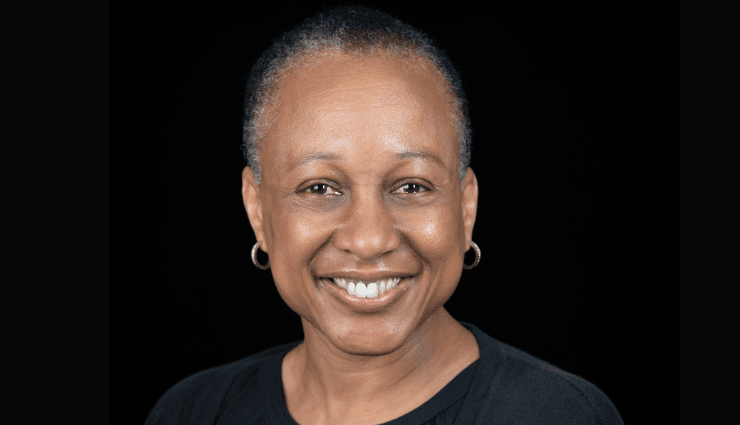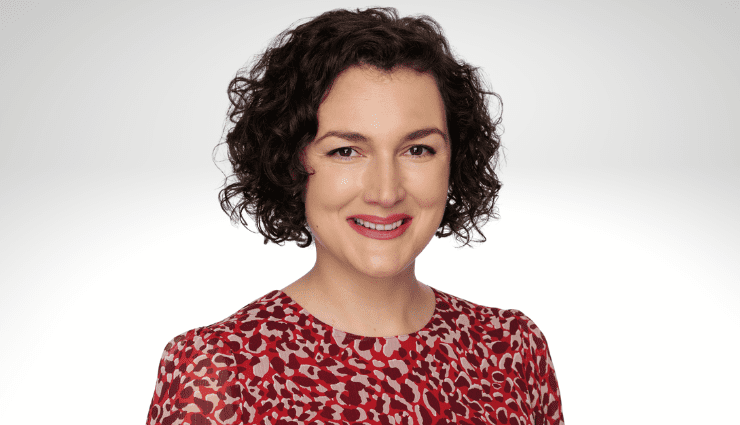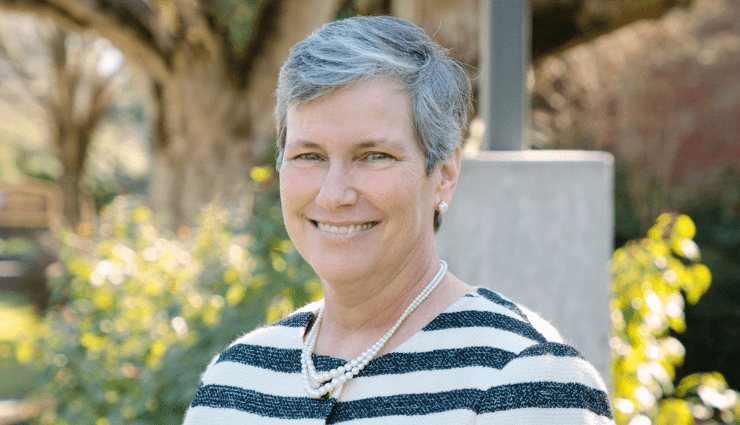Talking a Better Game Than We Play

The New York Times calls Ta-Nehisi Coates’s 2015 National Book Award winner, “Between the World and Me,” a “searing meditation on what it means to be black in America today.” The “searing” part is Coates’s charge that the collective white majority, at best, is indifferent to our racist culture and, at worst, colludes in maintaining it for power and privilege.
So why, one might reasonably ask, have so many white people embraced the book, myself included? In a discussion at the Schomburg Center for Research in Black Culture, journalist Nikole Hannah-Jones asked Coates this question. Coates more or less shrugged it off with a laugh that suggested he has seen this pattern — whites who appear to care deeply as individuals, but who do little collectively to bring about needed change.
I certainly can’t and don’t want to speak for all white people. But I know that when it comes to the field of education, many of us who are white have been too complacent — generally happier to be informed about race than to take action. How do I know this? Because over the course of the past 30 to 40 years, in an era in which much has changed in education, racial inequity has remained a constant. And we, more or less, have been in charge.
All educators, of course, should care deeply about the educational experience of every child. But I want to address white educators who believe in the democratic principles of equity and justice and want to see it applied with greater urgency. What I’ve come to see in recent years is that we tend to talk a better game than we play. In addition to Coates, I’ve been reading other writers who offer equally painful observations of white culture, with equally painful lessons for white educators.
For instance, it’s hard to read the essays of James Baldwin today and come across passage after passage elucidating racial prejudice in the northeast United States and see how little we’ve advanced since the 1950s and ’60s. It’s painful to read “All Eyes Are Upon Us,” Jason Sokol’s 2014 analysis of racial injustice and the shortcomings of reform efforts in New York, Connecticut, and Massachusetts since World War II, and realize that the seemingly best intentions of northern liberals have not resulted in equity — not even close. In fact, Sokol’s book essentially questions the region’s commitment to racial justice. “On the matter of race,” Sokol writes, “the Northeast has been a place at war with itself.”
The more one reads about racism in American culture, past and present, the more one is confronted by this gulf between intentions and outcomes.
The data on our divided society are widely available, but for those who need a reminder, here are some essentials. Today, compared to whites, blacks suffer from a higher infant mortality rate, a higher dropout rate, a higher incarceration rate, and have less access to quality healthy care, housing, jobs, and education. When it comes to family wealth, according to a 2011 New York Times article, whites have 20 times the wealth of black families. Regarding education, the Education Trust notes, we consistently underfund schools that are predominantly black and Latino and assign these schools the least qualified teachers.
In his 2016 Atlantic article, “My President Was Black,” Coates points out that “the unemployment rate among black college grads (4.1 percent) is about the same as the unemployment rate among white high school grads (4.6 percent).” He adds that black also pay more for their college degree and carry greater debt.
Today, New York City still has among the most racially segregated schools in the county. The issues that Jonathan Kozol so passionately brought to light in a series of important books — including “Death at an Early Age” (1968), “Savage Inequalities” (1991), “The Shame of the Nation” (2005), and “Fire in the Ashes” (2012) — are still our issues. Ed Boland, in his 2015 book, “The Battle for Room 314,” underscores how the whole urban educational system feels set up for failure — at least when it comes to the education of poor students of color. Every decade since the 1960s, researchers and writers have underscored our racially divided and inequitable schools. Many have offered concrete plans or clear pathways to better schools. And yet…the problems persist.
In their 2011 book “Creating the Opportunity to Learn,” A. Wade Boykin and Pedro Noguera make it clear that teachers (a predominantly white workforce) play a role in all this, too: “Approximately 75 percent of Black students disagreed with the statement, ‘My teachers support me and care about my success in their class.’ By contrast, this was the case for only 37 percent of White students and 32 percent of Asian students.”
A question we might ask ourselves and our state and federal representatives: Would we shrug this off if the situation were reversed — if white students were the ones clearly unfunded and underserved?
Over the years, I have read a great deal about racial inequity in America, and written about how it plays out and is perpetuated in schools. I have high hopes that in the field of education, at least, we can create better models, better systems, display a clearer sense of what justice looks like in schools, and otherwise refuse to accept inequities as inevitable. I believe that if we can do this, we have a greater chance of moving the rest of society, a generation at a time, toward equity. But I’m starting to see that all of us — especially the predominant white majority in schools — need to step up and make cultural and social change a professional priority.
If you look around the room at a progressive education conference, for instance, and see a predominantly white audience, ask the community why this is so. If you work in a school with a predominantly white teaching staff, ask your colleagues what you can do to change the equation. If your school mentions social justice or equity or a commitment to diversity in its mission and your teaching staff and administrative team are predominantly white, ask your school leaders about their plan to fix things. If as a teacher, your black and Latino students of color are consistently performing at a lower level than your white and Asian students, ask yourself what steps you can take today to rectify the situation. If you have faculty members who think that diversity training and cultural competency have nothing to do with them, ask why no one is holding them accountable for this view.
I know it’s much easier to say these things than to do them. We are all creatures of our cultures. Even those who think of themselves as independent minded are shaped by their times and those around them. It’s much easier to go along to get along than it is to challenge ourselves and our colleagues to rethink what we are doing. The good news for all of us, however, is that there are already many educators working hard for social change. We would be wise to identify them, thank them, and find ways to join them. This is about creating educational systems that are well-functioning and just. It’s also about how we spend our time — about personal and professional pride.
People who know me know that I can be skeptical about claims of transformative technology in schools. But another book — Kira J. Baker-Doyle’s “Transformative Teachers: Teacher Leadership and Learning in a Connected World” (2017) — surprised me for the hope it offers in both empowering educators and in finding our path to social justice. What I love about this book is that the “focus here is on technologically savvy teacher leaders who are working toward a larger purpose: one of organizing for equity and social justice for students.”
More and more educators, Baker-Doyle points out, are using computer connectivity to raise the level of teacher knowledge and skills and to drive social change and justice through a commitment to equitable education. The bottom line is that we need to use our “thimble full of power,” as one writer I know put it, to insist on getting more resources to underresourced schools, providing enriching experiences for all students, and supporting and learning from each other.
It often feels as if the larger cultural issues lie beyond our reach, but we have the power within our communities, schools, and classrooms to speak up. We have the power to improve our own cultural competencies so we serve all students and parents well. We have the power to collaborate across differences with colleagues, improve classroom techniques to adapt what the brain science says children need. And we have the power to commit to steady diet of professional development that will keep us growing and improving.
Baker-Doyle in “Transformative Teachers” makes it clear that significant changes are already underway. As she writes, “The commitment to equity, social justice, and democratic practices, the mobilization of social capital and collective agency, the use of public spaces to push for accountability, the embrace of the personal, and the emphasis on reciprocity and caring are all reflected in transformative teachers’ work.”
The basic lessons for educators today:
- Find a way to connect socially and professionally — in person and online — with others who are committed to equitable education.
- Be engaged in these communities.
- Take responsibility for your own learning.
- Be both advocate and ally. On the one hand, fully support students, families, and colleagues of color. On the other hand, speak up publicly for needed systemic change.
- Within your school, speak openly about the ways in which racial inequity plays out and about changes that will better align the school with its stated goals and mission.
- Teach with love and knowledge and fearlessness.
In some ways, it’s an old-school lesson: model the world you want to live in. The difference today is that we have more individual and collective power to push for the change we want to see. It’s one thing to have hope for the future, but as James Baldwin writes, “There is never a time in the future in which we will work out our salvation. The challenge is in the moment, the time is always now.”
Michael Brosnan is the former editor of Independent School, a quarterly magazine on precollegiate education. He is now an independent writer and editor, with a particular interest in education and social change. He can be reached at michaelbrosnan5476@gmail.com.








